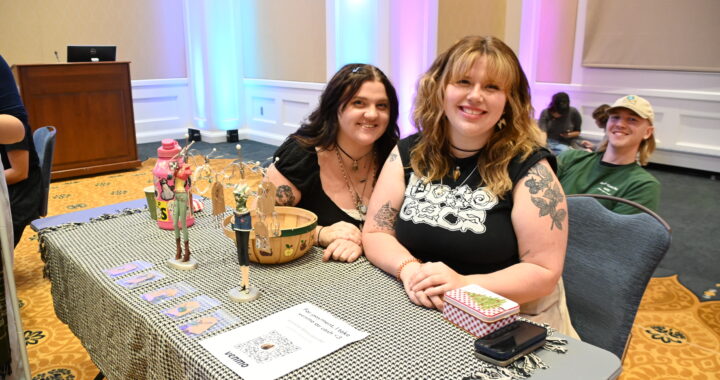Visiting alumna introduces students to art conservation
3 min readBy KATIE ROPER
What do sleuthing, painting, and infrared technology all have in common? While it sounds like a scene out of “The Da Vinci Code,” it’s all in a day’s work for University of Mary Washington alumna Joanna Dunn.
As a painting conservator of the systematic collections in the Italian, French and Dutch schools at the National Gallery of Art, Dunn gets to work up close and personal with some of the most famous and celebrated works of art in the world.
On April 3, Dunn returned to UMW to give a talk to the art and art history department called “The Art Of Conservation,” in which she discussed some of the principles of conservation, as well as some of the work she has done as a conservator.
A member of the UMW Class of 1998, Dunn has not forgotten her time as a studio art and art history double major. She even shared that her experience in a museum studies class and a field trip to a conservation lab she took as a sophomore made her realize that being a conservator was her dream job.
“I knew this is what I had to do,” Dunn said, in reference to her stepping into the conservation lab for the first time.
Her passion for the work she does was obvious throughout her presentation, which covered what conservation entails in a basic way that was easily understood by the audience.
In her presentation, Dunn was very clear to distinguish the differences between conservation and restoration. The intent behind conservation is to preserve the artist’s original work, as well the artist’s original intent for how the work was to be seen, while restoration focuses on making the work look as a good as possible.
Conservation usually makes the appearance of the work look better, as well but that’s not always a guarantee. In the painting conservation that Dunn does, she never paints over anything original because everything that conservators do is something that can be undone easily without any risk of damage to the original artwork.
She also talked about the two phases of conservation, which are referred to as the structural and aesthetic phases. The structural phase focuses on repairing damage to the support of the painting, basically the wood or the canvas.
The aesthetic phase, which Dunn described as “more fun,” focuses on the painting itself. It includes the cleaning and removal of varnish and the previous conservator’s work from the painting and the inpainting, or reconstructing the lost parts of the piece.
“I really love the actual treatment part. It’s really satisfying to take off the varnish or dot in the losses,” Dunn said.
As a conservator, Dunn uses infrared reflectography and other types of x-ray technology to discover, not only the problems with the paintings that need mending, but also about the history of the paintings and the artists. As a part of her talk, Dunn showed the audience examples of before and after photos of paintings she had repaired by the hands of artists such as Rembrandt, Peter Paul
Rubens and Gilbert Stuart. The changes were noticeable and the colors were brighter in the work that she shared.
Conservation is an essential part of the museum experience that the average person doesn’t know much about. The behind-the-scenes work of people like Dunn helps to solve the mystery behind the art as well as to preserve the works of art which are so dear to the world.
Part detective, part doctor and part scientist, Dunn contributes to the maintenance of the integrity of these valuable works of art that we sometimes take for granted.



